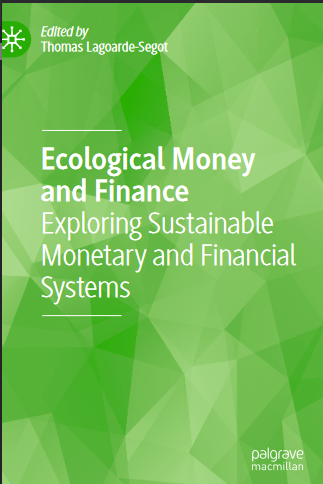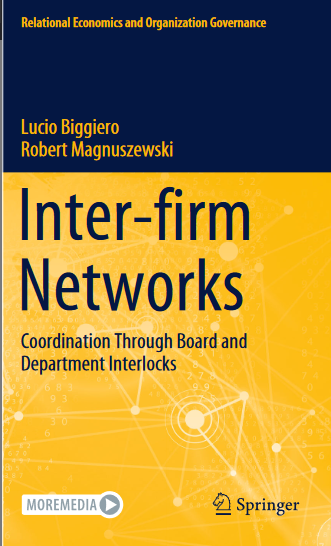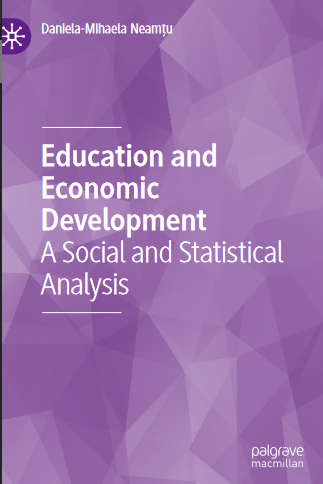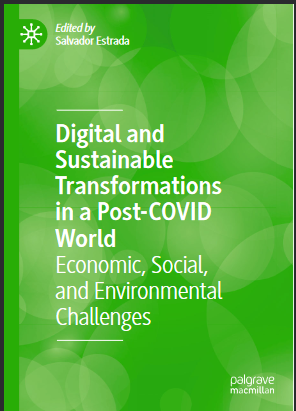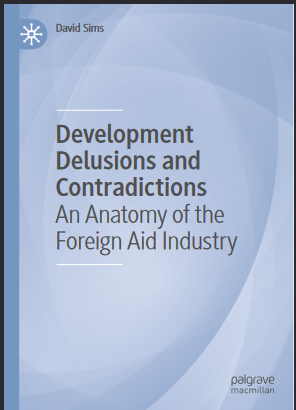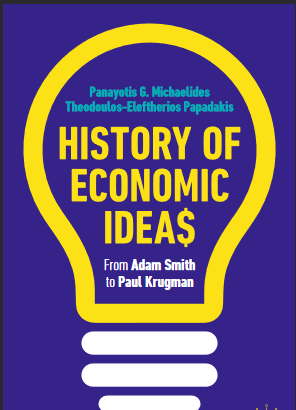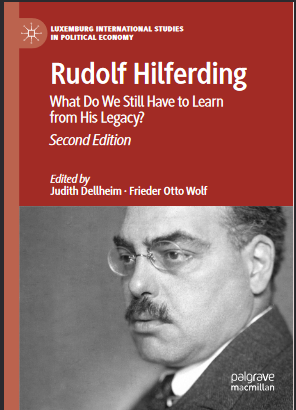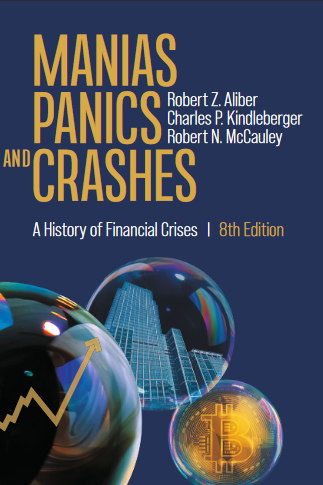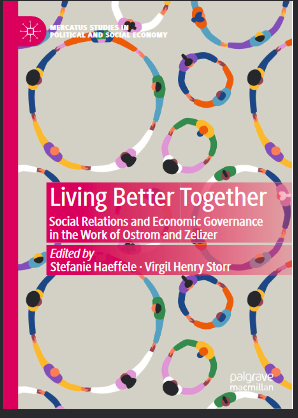موضوعات
آموزش و پرورش
ادبیات و زبان
پزشکی، دندانپزشکی و داروسازی
تاریخ و جغرافیا
داستان و رمان
دیگر
دین و فلسفه
روانشناسی
ریاضیات و آمار
سلامتی، تناسب اندام و رژیم غذایی
شیمی و پلیمر
علوم اجتماعی و حقوق
علوم زیستی و بیوتکنولوژی
فیزیک و نجوم
کامپیوتر و اینترنت
کتابهای کودکان و داستان
کسب و کار و اقتصاد
کشاورزی و دامپزشکی و غذا
معماری
مهندسی و فناوری
هنر و تئاتر
محصولات
Ecological Money and Finance - Original PDF
نویسندگان: خلاصه: v As early as 1890, the economist Alfred Marshall wrote: ‘Economic condi- tions are constantly changing, and each generation looks at its own prob- lems in its own way’. Our generation, in turn, faces particularly pressing problems: financial crises, the uncertain effects of technological change, widening income and wealth inequalities, rising public and private debts, geopolitical tensions, climate change, degradation of natural systems, etc. One particularly worrying fact is that the ‘Great Industrial Acceleration’ has now been identified as the root cause of a major disruption of the Earth system. This disruption is undermining not only the resilience of our global economy but also life on Earth. As shown in Fig. 1, a simple linear regression between global GDP and kilotons of CO2 emissions shows a correlation coefficient of 0.966. A linear regression between global market capitalization and CO2 emissions also shows a correlation coefficient of 0.960. The accumulation of monetary wealth (through GDP) thus mirrors the unaccounted destruction of ecosystem services, and the accumulation of a colossal energy and ecological debt. The rate of species extinction is now 100 times higher than the average observed over the last 10 million years. Nearly 1 million species are threatened with extinction. Compliance with the Paris Agreement—which commit to keeping global warming well below 2° by 2100—is clearly a civilizational issue that calls for a deep reorientation of our socioeconomic modeInter-firm Networks Coordination Through Board and Department Interlocks - Original PDF
نویسندگان: خلاصه: Firms do not interact only through prices, quantity or quality: rather they employ many other ways to coordinate their behavior. However, it is still rather unclear under which circumstances the mix of different ways is built, neither the relative relevance of each of them. What is sure is that one of such ways is through sharing a director between boards of related companies: this is the phenomenon named interlocking directorates or, more recently, board interlock (BINT), known since long, but still deserving a lot of attention. Actually, this is a form of coordination which occurs at a company’s highest level, because boards decide—or at least address to—the strategic behavior. There are indeed many reasons to share a director, reasons that do neither always nor intentionally deal with strategic issues. However, whatever they are, the effects of board interlock always impact, to a more or less extent, the sphere of strategies. Further, and more noteworthy, more or less intentionally and extensively, they imply some form of knowledge creation and sharing, espe- cially under its tacit form. In fact, what should actually be done when one sits in a board and how to perform this is not a task so precisely defined: its concrete execution depends primarily and essentially on the personal characteristics of each involved director and on various organization-specific circumstances. Hence, this is the conceptual perspective applied into this book: Board interlocks are inter-firm coordination forms that channel strategic knowledge, which is a resource particu- larly precious in innovation-based industries, and one becoming progressively more important also in all other industries. Due to these characteristics, the main research streams employed in this work are the four following: board interlocks, knowledge networks, inter-firm networks and Social Network Analysis (hereafter, SNA) as the main methodological approach.Education and Economic Development - Original PDF
نویسندگان: خلاصه: The foundation of present-day society is based on human resources as a key element for growth and based on education for economic and social prosperity. It has become a true fact that current development relies heav- ily on education and culture as a business model, some communities hav- ing their own internalized ways, while other cultures provide for a more open society. Consequently, education in modern society has become a field of study as well as an object of study for teachers, economists, soci- ologists, and many other researchers. The progress of a society, considered from both an economic and a social perspective, is accomplished by acquir- ing knowledge allowing the human potential to be used in the best pos- sible way in various conditions. Education stands for the foundation of a free and open society, the cornerstone of a powerful and sound state. From a professional point of view, education represents the key foundation of human resource develop- ment worldwide. Globally, society itself heads continuously toward a knowledge-based economy, where education and performance are con- stantly judged against performance indexes, as well as a comparison index, among countries. Numbers and narratives lead to the transformation and valorization of strategic resources based on innovation, learning, and changHandbook of Hope Theory, Measures, & Applications - PDF
نویسندگان: خلاصه: This Handbook of Hope simply would not have happened without a small army of graduate students who, over the past decade, have come into my office one by one and suggested yetanother angle from which we could view hope. In that sense, what has come to be called hope theory has been like a gemstone that, when held to the light, sends shimmers of ideas about yet other possible implications or experiments. I have produced previous theories about reactions to personal feedback, uniqueness seeking, excuse making, and reality negotiation, hue none of chose have continued co produce the sufficiently intriguing questions to get me revved up for yet another experiment. Hope theory has been a great energizer at a time in my life when I have needed it. For the past seven years I have had a severe, unrelenting, and undiagnosed chest pain that is with me from my fim waking moments to the time th.at I slip off into sleep. Although I have been taking powerful pain killers, I think that none of those pills matches the positive effects of my getting lost in theory and research and work- ing with my students. At age 55 (by the time this book is published), I still enjoy the theory and bench science to the same degree that I did as a brand new 27-year- old assistant professor here at Kansas. And so, I have much for which to be th:.ink- ful.Digital and Sustainable Transformations in a Post-COVID World Economic, Social, and Environmental Challenges - Original PDF
نویسندگان: خلاصه: The worst of times in 50 years. Wars, pandemics, and climate change. In addition, to civil and drug wars, ethnic violence, and terrorist insurgen- cies, now we are suffering a Geopolitics war. Over a half billion infected people and 6 million passed away. Climate change worsens natural disas- ters such as floods, drought, wildfires, and hurricanes. Pain, life losses, grief and suffering, exodus, and famine. In brief a humanitarian disaster. No doubt, these conditions exercise pressure to accelerate a transfor- mation. Global warming warns of carbon dependence. Change demands large-scale investments in renewable energy, but this solution is not contradiction-free. This technology requires rare earth minerals and other scarce and non-renewable materials found in a few countries. In times of deglobalization, opening trade is demanded to enable such a transfor- mation. We are living for these conditions: severe economic disruptions, higher costs of living, energy, commodities, and food price shocks. How is the world after a persistent COVID-19 pandemic? The COVID-19 pandemic is a decreasing worry since several parts of the world are becoming endemic, but we still suffer its impacts manifested in inflation, energy prices, and supply chain disruption. Nonetheless, the outlook for the economy is perceived as dark since the conflict in Ukraine and the threat of new virus strains and variants as other zoonotic diseases. So, the 2021 economic recovery has a turndown and provokes a cautious sentimenDevelopment Delusions and Contradictions An Anatomy of the Foreign Aid Industry - Original PDF
نویسندگان: خلاصه: xix Around 1700 almost everyone on earth was poor or destitute, and Thomas Hobbes’ phrase about life as “poor, nasty, brutish and short” certainly hit the mark. Perhaps only one-tenth of the world’s population was living what could be considered anywhere near comfortable lives. At least, this is what most economic historians will tell you. Jumping ahead 250 years, one could definitely say two completely dif- ferent worlds had emerged—a prosperous West and a definitely lagging Rest. The reasons for this ascendency of the West were due to processes and factors that, even today, are not well understood, but this huge West– Rest economic divide led to the realization that this gap was one of the great issues of the times, one that needed to be addressed as part of any new world order. Thus, by 1950 it could be said that the Development Era began. Some 70 years later, after untold machinations and lots and lots of money, the West is still very much at it. Western nations and institutions constructed increasingly sophisticated systems to redress this divide, based originally on the idea that transposed expertise and capital was what was needed to help nations build modern economies, to prosper, and eventually to be self-sustaining. Not only would these ‘emerging’ nations become partners in global prosperity; they would become great consumers as well and, through the miracles of free trade, economies of scale and comparative advantage, the West as well as the Rest would benefit. Yet what sounded so clear and noble back at the start of the Development Era, and what has remained, at least ostensibly, the philosophical bedrock of helping poor nations, has had to face a very rocky road, to say the leasHistory of Economic Ideas From Adam Smith to Paul Krugman - Original PDF
نویسندگان: خلاصه: xv Introduction Economic Science is the Social Science that studies the activities of people associ- ated with the creation of goods and services, with the real-world economic and financial transactions, both at the individual and collective levels. Economic Science is based on one or more theories, which are shaped, co-constructed or replaced with each other with the aid of quantitative analysis (mathematics, statistics, economet- rics, experiments, etc.). Economic Theory, in turn, is an abstract description of the functioning of the extremely complex real world, where new scientific knowledge does not emerge from ‘nowhere’ but arises out of existing knowledge, in a dialectical relationship with the ‘existing’ and very often to its negation. Therefore, science develops and evolves as a ‘living organism’, and often one scientific theory is followed by another in continuity, extension or even opposition to the previous one. Therefore, in order to have a body of knowledge for understanding Economics, we must delve into the various individual ‘truths’ of each theory and, therefore, we must look back to the work of earlier thinkers, within a science that is constantly evolving. This journey of the formation of Economic Theory cannot be seen independently of its social context, since it is within this context that Economic Science has devel- oped, in response to the social conditions that prevailed and their evolution. Therefore, an Economic Theory without knowledge of the deeper internal as well as external causal relationships that have shaped the existing theories would lead to a sterile view.Rudolf Hilferding What Do We Still Have to Learn from His Legacy? - Original PDF
نویسندگان: خلاصه: Editors and authors are, of course, grateful for the interest of our readers that has made it possible to realise a second edition now. We have made use of this happy occasion to correct mistakes we had overlooked in the first edition, to actualise the texts wherever needed, and to add four texts: one by Michael R. Krätke on the still unpublished notes of Hilferding’s last manuscript which had been published post-humously (discussed as such by F. O. Wolf), and another one, also by Krätke, on Hilferding’s cor- respondence; plus a presentation of Krzywicki, the Polish ‘equivalent’ to Hilferding, by Toporowski, as well as a contribution by the editors open- ing a perspective on Varga. We hope to fuel the incipient debate on Hilferding by providing access to these materials—which are not merely of biographical relevancy. We also have added a contribution on Eugen Varga, leading on to the next collection of texts planned in this series. All authors have had the occasion to revise their texts according to the need they could see for this. Accordingly, the new edition will serve as a use- ful tool for further developing the debate on Hilferding, after it had been unblocked from political fetters resulting from older political antagonisms. We have become aware that there is an important and specific debate on Hilferding in Japan. Minoru Kurata and Masaaki Kurotaki should at least be mentioned here. Unfortunately, we have not been able to find a Japanese author for presenting this debate authentically, for which we only Preface to the second edition xviii PREFACE TO THE SECOND EDITION have passing references in the volume. This remains an open challenge for further research and debate.1 In finishing this volume, while the terrible ‘military operations’ gener- ated especially by Putin and his narrow power circle are unfolding, we want to underline the deep internationalist character of our work aiming at strengthening critical thinking and emancipatory-solidarityManias, Panics, and Crashes A History of Financial Crises Eighth Edition - Original PDF
نویسندگان: خلاصه: When this work first appeared, it looked back a long way to the financial crisis of the 1930s and revived interest in an old theme. Few books on the subject appeared during the several decades after World War II, following the spate of the 1930s, because the industry that produces them is anticyclical in character,1 and recessions from 1945 to 1973 were few, far between, and exceptionally mild. This work also looked forward, four years it turned out, to the developing country debt crisis of 1982. In the decades since, 1982 proved just the first of four waves of financial crises. Debtors in three, four, or more countries defaulted at about the same time and the prices of real estate and securities in these countries fell sharply. Each country that experienced a financial crisis also had a recession as household wealth declined in response to the sharp fall in the prices of securities and real estate, and as the banks became much more reluctant suppliers of credit as their own capital was depleted. The Great Recession that began in 2008 was the most severe and the most global since the Great Depression of the 1930Living Better Together Social Relations and Economic Governance in the Work of Ostrom and Zelize - PDF
نویسندگان: خلاصه: olitical economy is a robust field of study that examines the economic and political institutions that shape our interactions with one another. Likewise, social economy focuses on the social interactions, networks, and communities that embody our daily lives. Together, these fields of study seek to understand the historical and contemporary world around us by examining market, political, and social institutions. Through these sectors of life, people come together to exchange goods and services, solve collective problems, and build communities to live better together. Scholarship in this tradition is alive and thriving today. By using the lens of political and social economy, books in this series will examine complex social problems, the institutions that attempt to solve these prob- lems, and the consequences of action within such institutions. Further, this approach lends itself to a variety of methods, including fieldwork, case studies, and experimental economics. Such analysis allows for deeper understanding of social phenomena, detailing the context, incentives, and interactions that shape our lives. This series provides a much-needed space for interdisciplinary research on contemporary topics on political and social economy. In much of academia today, scholars are encouraged to work independently and within the strict boundaries of their disciplines. However, the pursuit of understanding our society requires social scien- tists to collaborate across disciplines, using multiple methods. This series provides such an opportunity for scholars interested in breaking down the boundaries of disciplines in order to better understand the world around usآیا کتاب مورد نظر هنوز بر روی سایت قرار نگرفته است؟ جای نگرانی نیست! کافی است بر روی گزینه سفارش کتاب کلیک کرده و درخواست خود را ثبت کنید. در کمتر از چند ساعت کتاب شما را آماده خواهیم کرد.
